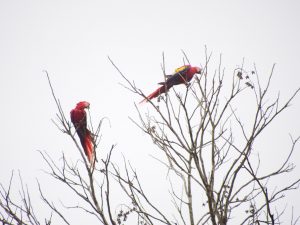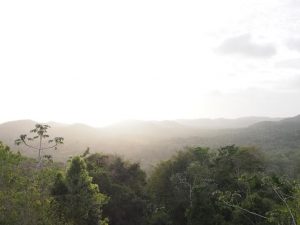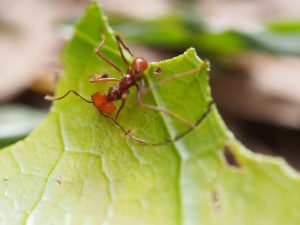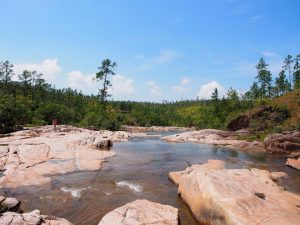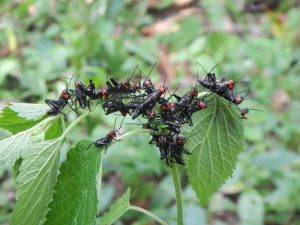One day in Belize, my class and I noticed a distinct commonality between the two most biodiverse ecosystems – coral reefs and tropical rainforests. Both function in nutrient poor conditions. The two differ greatly in the causations of their low-nutrient conditions. Coral reefs demand low nutrients to hinder algae growth and allow high water clarity, a condition demanded for photosynthetic coral synergists. The trees of the tropical rainforest, however, quickly deplete the soil of nutrients as they grow. While both systems exist in low-nutrient environments, low nutrient levels can lead to coral reef formation while the high nutrient demands of tropical rainforest tree leads to poor soil nutrients.
Regardless, the two ecosystems are able to support such biodiverse systems through their creation of physical spaces. Reefs for nooks and crannies for marine organisms to reside, as well has having great surface areas to accommodate sessile organisms like anemones and sponges. Tropical trees have many layering branches and alcoves within trunks and limbs. Similarly, these create spaces to accommodate more living things. Epiphytes, commensalist plants that grow on taller trees, demand the sunlit canopy trees provide. Structurally, the two have many parallels, which likely explains their comparable biodiversity.
Rainforests and coral reefs both accommodate animals smaller than their open ocean or open grassland counterparts. Not only are these ecosystem’s spaces unable to accommodate larger animals, but also larger animals have the potential to wreak havoc on these systems by overgrazing on or causing mechanical damage to coral or trees.
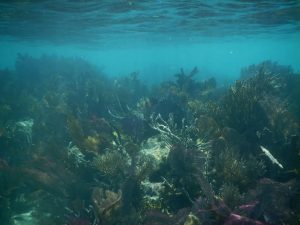
With their elaborate physical structures and densely-packed biodiverse inhabitants, the coral reef and tropical rainforest I visited in Belize filled me with similar senses of awe. There was activity or an interesting organic structure just about everywhere I would look. While I knew in advance that these ecosystems have great biodiversity, there is something about being physically present that makes these facts feel real.
I had very nebulous expectations for this trip. I wanted to learn and to have fun, but other than that, I put very little thought into identifying what I wanted to take away from this trip. This mindset turned out to be a blessing, as I could absorb my surroundings without constantly questioning whether or not my expectations are met. It was freeing to allow myself to be immersed in these beautiful locales and view them for what they are.
My memory of the trip is rich with precious moments – watching a squid jet across a reef, listening to the boisterous conversations of scarlet macaws, seeing the glistening hide of a manatee as it dive back into shallow mangrove waters, feeling the chilliness of the Actun Tunichil Muknal cave, spectating the sunrise over the ocean, viewing the uninhibited star-filled sky, laying on a hammock at the end of a long day. This aggregation of serenity and excitement is what I value most about the trip. While at times I felt stressed about the grade I would make, I strove to keep an empowering mindset that allowed me to fully cherish my surroundings.
The trip left me with a wide range of new knowledge. Ethnographically, Belize has an extremely diverse human population, serving as the home of Mestizos, Creoles, Garifunas, and Mayans to name the most populous. I learned about interesting physical properties of many living, including that mantis shrimp have a grasp so strong they can hurt people, Christmas tree worms always have pairs of polychaetes, conchs’ have two projecting eyes that look like cartoon eyes, and strangling figs can overtake massive canopy-forming trees to form large and extensive woody structures. I also learned about the harmful effect human negligence can have on ecosystems, like lionfish (a nonnative species released from aquariums) overpredate juvenile reef-dwelling fish and the prevalence of Africanized bees in the New World were caused by the escape of seven queens. I’ve learned countless new things that form a mosaic as vibrant and diverse as the colors of Belize itself.
I leave Belize with new memories and knowledge. I will always remember the electric blue of the Caribbean, the stunning vibrancy of scarlet macaw plumage, and the translucence of the Caribbean reef squid. After all, all I have are these memories of Belize until I go back.


